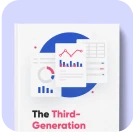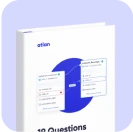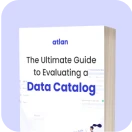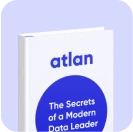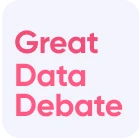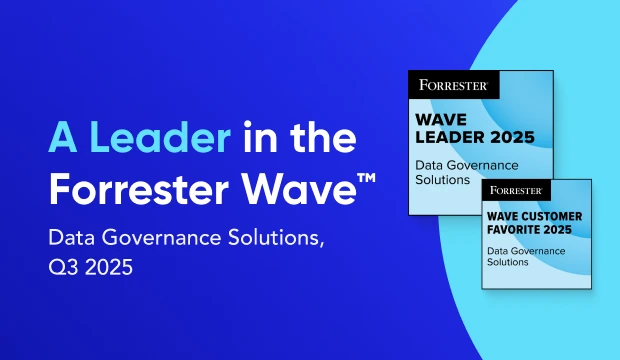Snowflake Data Discovery: What to Expect & How to Maximize Value in 2025
Share this article
Data discovery involves making data assets accessible for consumption across stages like acquisition, transformation, and cleansing, enabling efficient usage by diverse data consumers.
Scaling AI on Snowflake? Here’s the playbook - Watch Now
For organizations using Snowflake, most of these stages are managed within its ecosystem, making it the central metadata source for data sources, transformations, and targets. Snowflake’s data discovery capabilities play a crucial role in efficient and timely data consumption.
This article will explore Snowflake’s data discovery capabilities, interfaces, and integrations. It also introduces the concept of a control plane for data—a centralized framework for governance, access management, data quality, and more.
Table of Contents #
- Snowflake data discovery: Native features
- Extending data discovery across your data ecosystem
- Enhancing Snowflake data discovery with Atlan
- Summing up
- Snowflake data discovery: Related reads
Snowflake data discovery: Native features #
Snowflake data discovery relies on its internal data dictionary, which stores the structural metadata for data assets. This dictionary helps you search for data assets via SQL queries and a text-based search and exploration interface in the Snowsight console.
For a more comprehensive approach, Snowflake offers Horizon as a solution for data discovery, cataloging, and governance. Snowflake Horizon lets you discover all your Snowflake assets through the following features:
- Snowflake’s Internal Marketplace: This organization-specific marketplace gives you a complete view of all internal data assets. It’s a private and organization-specific version of the Snowflake Marketplace. This interface helps you have a refined data dictionary with added context and code snippets, along with data discovery aids like flags and highlights. You can also search any public data sets on the Snowflake Marketplace for broader exploration.
- Snowsight UI: Snowsight UI provides detailed insights into data assets, including relevancy, usage, popularity, quality, profiles, and dependencies. This enriched context simplifies the process for users searching, understanding, and consuming data assets.
- Snowflake’s Universal Search: Snowflake’s Universal Search offers a natural language interface integrated with Snowsight UI. This allows you to query across all data sources and asset types within Snowflake. Horizon further enhances this with automated AI-based data asset descriptions, optimizing search and discovery efforts.
Searching and discovering data assets involves multiple dimensions, and Snowflake offers additional features to enhance organization and usability across these aspects:
- Object tagging: Snowflake allows you to use system-defined or custom tags primarily for implementing certain governance policies related to sensitive and private data, which can also be very handy while discovering data assets, especially when you’re dealing with sensitive data.
- Data lineage: Integrated within the Snowsight UI, data lineage is a feature that offers a visual graph representation of how data flows and transforms through the pipeline. This makes it easier for you to understand data origins and changes.
Other features that enable collaboration in Snowflake, such as data sharing, clean rooms, and listings, among others, also contribute to a better search and discovery experience, especially when data access is restricted.
Extending data discovery across your data ecosystem #
While Snowflake’s native search and discovery features within the Snowsight UI offer a strong foundation, most organizations rely on a variety of tools for data exploration, analysis, business intelligence, and visualization. Often, these assets remain siloed within their respective tools, disconnected from the core data platform, and that underscores the need for a unified control plane for data.
Such a control plane would let you search and discover data across your organization irrespective of the tools, leveraging all of their native capabilities along with a bunch of value adds.
Atlan, a modern data control plane, integrates closely with Snowflake to provide an enriched discovery experience across your entire ecosystem. So, let’s explore how Atlan can elevate your data discovery efforts, connecting your data stack and unlocking greater value.
Enhancing Snowflake data discovery with Atlan #
Atlan, a Snowflake Ready Technology Partner, connects natively with Snowflake Horizon, thereby enriching the metadata collected. This integration enhances data cataloging, governance, lineage, and access management. Additionally, Atlan offers a wide range of features of its own that also help you get a more enhanced data discovery experience:
- Advanced natural language search: Atlan’s Elastic-based full-text search engine is powered by Elastic’s query DSL, which provides greater flexibility in searching, sorting, and filtering data assets.
- Higher degree filtering: To narrow the search surface area for more accurate results, Atlan lets you add several filters, such as asset types, domains, owners, tags, properties, among others. It also enables you to create filters on custom metadata.
- Discover based on trust signals : Atlan lets you help build trust in data assets by allowing you to certify assets fit to be used. There are four levels of certification you can have:
Verified,Draft,Deprecated, andNo certificate. - Personalization & curation: With the ability to define Personas and Purposes, along with the ability to save searches and filters, you can customize the discovery process to align with your team’s workflows.
- Business glossary: As part of the Asset Profile, Atlan allows you to create a README file for every data asset in the catalog. This file holds all the important context about the data asset, including text, diagrams, and embeds, among other things.
- Custom metadata creation: Atlan also lets you create custom metadata fields that fit your organization’s domain, processes, and workflows better. This is especially useful when dealing with thousands of data assets across hundreds of data sources.
- 360° visibility for every asset: With all the metadata and context that Atlan holds and the information it gathers from a tool like Snowflake, it provides full visibility into the data asset’s purpose, journey, constraints, and usage directions.
These capabilities, combined with Snowflake’s native features, create a richer and more effective data discovery experience. Many organizations like Montreal Analytics, Contentful, carVertical, and Porto, have improved their data discovery processes for their teams with Atlan.
Summing up #
Efficient data discovery is crucial for data and business teams in organizations to locate and trust data assets, ensuring timely and accurate analysis. By enhancing Snowflake data discovery with Atlan, enterprises can build a unified, intuitive discovery experience while integrating governance, lineage, and quality.
You can learn more on Atlan’s official documentation about connecting Snowflake and Atlan to better data discovery and the governance, cataloging, lineage, and quality aspects of your organization.
Snowflake data discovery: Related reads #
- Snowflake Summit 2025: How to Make the Most of This Year’s Event
- Snowflake Cortex for AI & ML Analytics: Here’s Everything We Know So Far
- Snowflake Horizon for Data Governance: A Comprehensive Guide
- How to Set Up Data Governance for Snowflake: A Step-by-Step Guide
- Snowflake Data Cloud Summit 2024: Get Ready and Fit for AI
- Snowflake Data Lineage: A Step-by-Step How to Guide
- How to Set Up a Data Catalog for Snowflake: A Step-by-Step Guide
- Snowflake Data Catalog: What, Why & How to Evaluate
- Snowflake Data Mesh: Step-by-Step Setup Guide
- Snowflake Data Security: A Complete Guide for 2025
- Snowflake Data Access Control Made Easy and Scalable
- Glossary for Snowflake: Shared Understanding Across Teams
- Personalized Data Discovery for Snowflake Data Assets
- Snowflake Data Dictionary
- Managing Metadata in Snowflake: A Comprehensive Guide
- Snowflake Data Compliance: Enhancing Native Features With A Unified Control Plane for Data
- How to Query Information Schema on Snowflake? Examples, Best Practices, and Tools
Share this article


